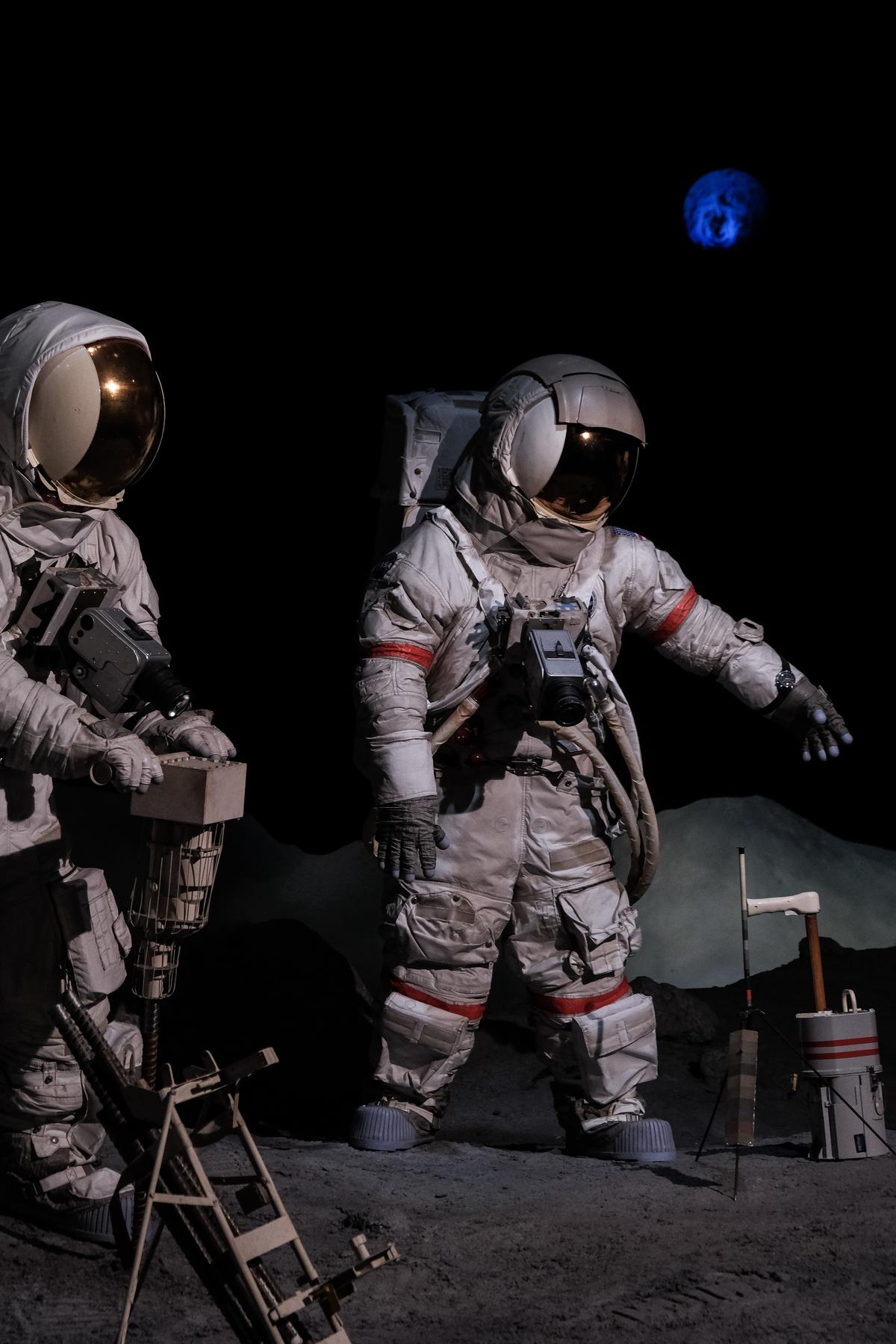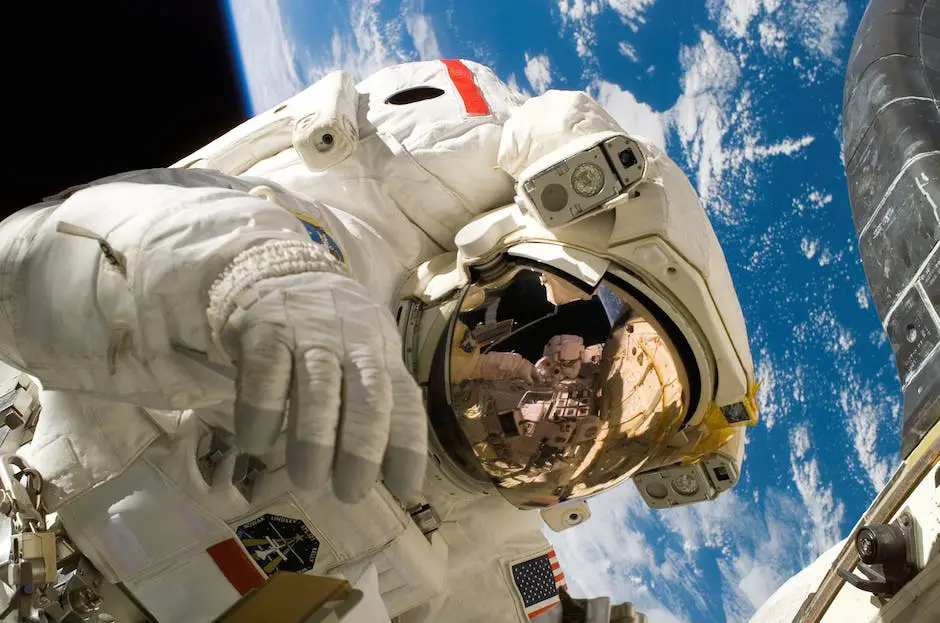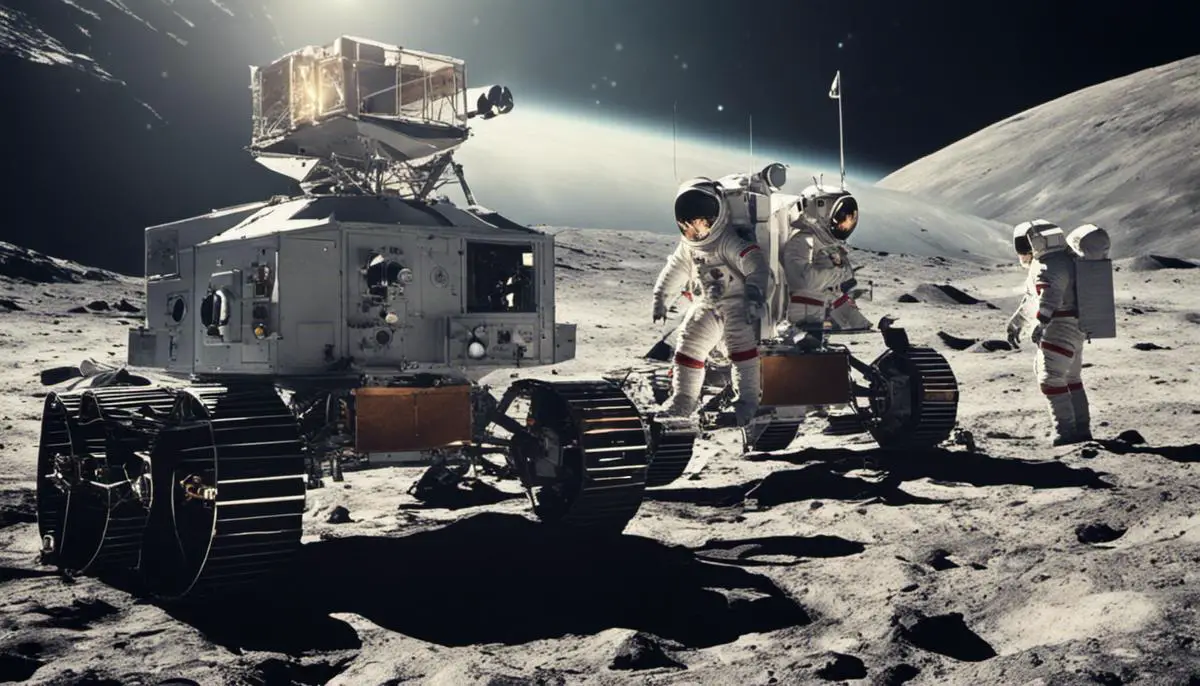Unlocking the mysteries of our cosmic neighbor, the moon, was the prime objective that drove the Apollo lunar missions. An ambitious endeavor backed by NASA, these missions took a crew of astronauts millions of miles away from the familiar comfort of home, landing them amidst the desolate lunar landscape. Starting from the inception, the processes, and objectives of these missions, the spotlight gradually shifts to what these pioneering astronauts were seeking – new knowledge. The curious lunar surface was a new frontier, a place for performing novel studies and experiments, scrutinizing soil samples, studying seismic phenomena, and exploring the moon’s enigmatic magnetic field. What followed was a flood of scientific discoveries that revolutionized our understanding of the moon and, by extension, our solar system.
Contents
Origin and Basics of Apollo Missions
Genesis of Apollo Missions
In the context of the Cold War and surrounded by intense rivalry with the Soviet Union, the Apollo Missions were conceived as part of NASA’s (National Aeronautics and Space Administration) human spaceflight programs. The ambitious endeavor was initiated upon a challenge set by President John F. Kennedy in 1961 to land a man on the moon and return him safely to the Earth before decade’s end.
Objectives and Overview of the Apollo Missions
As stated by the Kennedy challenge, the primary objective of the Apollo program was to successfully demonstrate the technological capability of the USA by putting a man on the lunar surface. However, alongside this political objective, there lay a number of scientific goals. These included comprehensive exploration of the moon’s surface for a better understanding of lunar geology, conducting experiments on the lunar surface to further comprehend the moon’s environment, and establishing technology and systems for future space explorations.
The Apollo program, running from 1961 to 1972, consisted of 17 missions, 12 of which were manned. Apollo missions 1 through 10 were precursor missions that involved either unmanned spacecraft or orbiting the earth as test flights. Apollo 11 marked the success of the program with Neil Armstrong and Buzz Aldrin becoming the first humans to set foot on the moon in 1969. Apollo missions 12, 14, 15, 16, and 17 further continued lunar exploration with Apollo 13 being a failed mission.
Astronauts Involved and the Spacecraft Details
Several distinguished astronauts were part of the Apollo missions including but not limited to Neil Armstrong, Edwin E. Aldrin Jr., Charles Conrad, Alan Shepard, and James Irwin. In total, twelve astronauts walked on the moon. The astronauts were selected based on their vigorous physical conditioning, simulations in controlling spacecraft systems, and their ability to work efficiently in zero gravity and lunar gravity.
The Apollo Spacecraft was designed to transport astronauts from Earth to lunar orbit and back. It consisted primarily of two parts: The Command Module, a cabin that housed the crew and the equipment needed for re-entry and splashdown; and the Lunar Module, designed for lunar orbit insertion and descent to the lunar surface.
Scientific Discoveries from the Apollo Lunar Landings
One of the key objectives of the Apollo missions was scientific discovery. Numerous experiments were conducted on the lunar surface. These missions, particularly Apollo missions 11 through 17, brought back a total of 842 pounds of lunar rocks, core samples, and soil. Analysis of these specimens has provided novel information about the moon’s composition and geological history.
Discoveries from the Apollo missions include finding the lunar highland crust is composed predominantly of a unique rock type, the anorthosite, and the lunar maria are dominantly basaltic in nature. Other findings include evidence of tiny metallic particles in lunar soil and the discovery of ancient lunar rocks, which provided insights into the moon’s history and revealed that the moon is about 4.5 billion years old.
Some missions also carried seismometers which allowed for monitoring moonquakes. These studies led to the discovery that the moon has a smaller, partially molten core, much unlike Earth’s.
Additionally, reflective mirrors, also known as retro-reflectors, were placed on the lunar surface by some Apollo missions. These are still being used today to measure the precise distance from Earth to Moon, contributing towards understanding of Earth-Moon dynamics and testing the theory of general relativity.
Unraveling the Lunar Mysteries
The Apollo missions accomplished by NASA between 1969 and 1972 opened a new era in our understanding of the moon, including its origins and its relationship with Earth. These missions not only paved the way for future space exploration but also initiated advancements in technology, the impact of which is still evident on Earth today.

Photo by joehan330 on Unsplash
Exploration and Experiments on the Lunar Surface
Detailed Insights: Apollo Missions and Lunar Surface Exploration
The Apollo lunar missions have given a human touch to the realm of space – a significant milestone in our journey to the universe. The primary goals of these audacious missions were multifold including, anchoring human presence on the lunar surface, executing scientific experiments, gathering soil and rock specimens, and ensuring a safe return back to Earth. Over the course of six successful lunar landings, astronauts carried out a diverse array of scientific exploration initiatives and experiments, further expanding our knowledge about Earth’s solitary natural satellite.
Lunar Rock and Soil Sampling
One of the crucial aspects of scientific exploration during the Apollo missions was the collection of lunar rocks and soil samples. The astronauts were extensively trained to select, document, and collect various kinds of lunar materials during their moonwalks. Over the course of six landings, approximately 842 pounds of material were returned to Earth. These samples, comprising of basalts, breccias and anorthosites, have been invaluable in providing insights into the geological history of the moon. They revealed details about the moon’s composition, age, and internal structure, helping scientists to understand the evolution of the moon and by extension, Earth.
Seismology Experiments
The Apollo missions also involved several seismology experiments to study the moon’s seismic activity. The astronauts installed seismometers, devices that measure ground motion caused by earthquakes, volcanic eruptions, and other subsurface activities. The Passive Seismic Experiment Package (PSEP) and the Lunar Surface Gravimeter among other instruments, helped in identifying “moonquakes” and provided comprehensive data about the moon’s seismic activity. Data from these experiments proved that the moon is not geologically dead and has a thinner crust than previously thought.
Lunar Magnetic Field Study
The Apollo Lunar Surface Experiments Package (ALSEP) carried instruments to measure the moon’s magnetic field. This was important to confirm if the moon had any internal magnetism. Results showed a weak but present magnetic field, suggesting that the moon had a molten, conductive core at some point in its history. The discovery shed light on the moon’s past possible magnetic dynamo and helped refine theories about the evolution of celestial bodies.
Spectral Reflection and Solar Wind Experiment
The Apollo missions also involved a series of experiments to understand the interactions between the lunar surface and the solar wind. The Lunar Surface Magnetometer (LSM) recorded the variations in the Moon’s magnetic field. Additionally, the Spectral Reflection experiment aimed to determine how the moon’s surface reflects solar radiation. These studies led to a better understanding of the effect of solar particles on the lunar surface and the space environment around the Moon.
Introduction
The Apollo lunar missions stand as a testament to human innovation and exploration, yielding valuable insights about the cosmos and our specific place within it. Notably, the data obtained during these journeys continues to shape space explorations to this day.

Photo by jordansteranka on Unsplash
Scientific Discoveries and Their Implications
Discoveries in Lunar Geology and Soil Composition
The Apollo lunar landings yielded invaluable information about the Moon’s surface. Astronauts returned to Earth with a sizeable collection of lunar rocks and soil samples, totaling 381.7 kilograms or 841 pounds. Detailed analysis of these specimens has revealed that they contain familiar minerals, including olivine, pyroxene, and plagioclase feldspar, much like the Earth. Further examination of the moon’s narrative revealed that its soil, or regolith, consists of minuscule glass beads molded from meteor impacts, in addition to volatile elements that can easily evaporate when subjected to high temperatures.
Moon’s Internal Structure
The seismic experiments conducted during Apollo missions greatly enhanced our understanding of the Moon’s internal structure. The Apollo Passive Seismic Experiment recorded moonquake activity and provided data that helped scientists conclude that the moon, like Earth, has a crust, a mantle, and a core. The finding challenges previous notions about the moon as a homogeneous body and further highlights its geological similarity to Earth.
Moon’s Magnetic Field
Findings from the Apollo mission also advanced our knowledge about the moon’s magnetic field. Earlier, it was believed that the moon lacked a magnetic field. But data collected by Apollo missions indicated that certain regions of the moon exhibited remnant magnetism. While the moon does not have an active global magnetic field, the presence of localized magnetic fields suggests that the moon might have had an active magnetic field in the past, a vital clue to understanding its geological history.
Implications for Understanding the Moon and the Solar System
The discoveries from the Apollo lunar landings have significantly advanced our understanding of the moon and the solar system. The lunar geology and mineral composition reveal the moon’s volcanic history and its formation through a giant impact event. The insights about its internal structure and the past magnetic field have implications for understanding the moon’s thermal evolution and the dynamo theory. Furthermore, the findings on the presence of volatile elements in lunar soil could have implications for future lunar explorations and the possibility of utilizing lunar resources.
A Comprehensive Overview of the Apollo Missions’ Impact
The Apollo missions offer a keystone for scientific discoveries in the field of space exploration. They enriched our understanding of the moon by providing essential insights into its composition, origin, and evolution. Moreover, they enhanced our perspective of planetary science, enabling us to compare Earth with other entities in our solar system. The lasting legacy of these missions continues to inspire and stimulate further advancements in lunar exploration.

Continuing Impact of Apollo Missions
Futures Studies Rooted in the Enduring Contributions of the Apollo Missions
The longevity and relevance of the Apollo missions are strongly linked to the extensive body of data that was collected. These missions facilitated the collection of over 382 kilograms of lunar material, comprising soil and rocks. These samples have been, and continue to be, a valuable source of data to probe deeper into the lunar geology. The insights gleaned have revolutionized our understanding of the moon’s characteristics and past, including its age and the presence of water ice in polar regions.
In addition to the lunar samples, the Apollo Lunar Surface Experiment Package (ALSEP) left a lasting imprint. It placed seismometers on the moon’s surface to monitor lunar seismic activities. The recorded data, until 1977, divulged significant information about the moon’s internal structure, revealing a small, partially molten core.
An equally influential study concerns cosmic rays. Astronauts on these missions positioned detectors on the lunar surface, and the data captured have substantially improved our understanding of radiation in outer space. Their work is pivotal to planning future, lengthier space missions and comprehending the possible radiation risks confronting astronauts.
Significance of Apollo Missions for Present and Future Space Exploration
The findings from the Apollo missions continue to shape the direction of current and future space exploration. One key discovery was the presence of Helium-3, a lightweight and non-radioactive isotope on the lunar surface. This scarce material on Earth is highly coveted in the field of nuclear fusion research, as it has the potential to provide safer nuclear energy.
The discovery of water ice on the surface of the moon has significant implications for future space travel. Water can be divided into oxygen and hydrogen, essential components of rocket fuel, making the moon a potential refueling station for future missions.
The successful demonstration of the moon landings also helped to establish the feasibility of manned space travel and long-term missions. The Apollo missions’ successful technology and design models have formed the basis for several future mission designs, as well as the development of the International Space Station (ISS).
Lastly, lessons learned from the Apollo missions about the psychological and physical effects of prolonged space travel are being used to prepare astronauts for future exploration missions. Apollo mission findings continue to inform strategies around astronaut selection, training, and health management.
In summary, the Apollo missions provided groundbreaking discoveries about the moon and space that continue to inform and shape current scientific research and future explorations. Their impact extends far beyond their time, echoing through the annals of space exploration history and into the future of human pursuits in space.

As we continue to push the boundaries of human exploration, the enduring legacy of the Apollo missions remains ever pertinent. The data gathered from these daring lunar expeditions continue to fuel and influence modern theories about our celestial neighbor. The scientific discoveries unveiled by these missions have undoubtedly enriched our understanding of lunar geology, its core, and the puzzling magnetic field. They have significantly contributed to how we perceive the moon today and our broader views on space exploration. Therefore, the Apollo missions have had a profound and ongoing impact, shaping future endeavors that endeavour to decode the mysteries of the cosmos.
